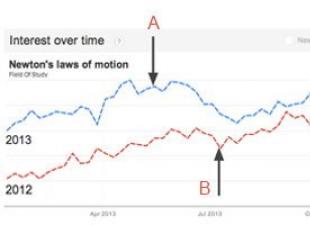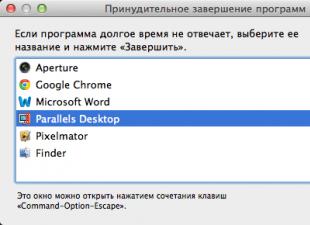In the section on the question How to properly charge the Battery from the Dawn 2 charger? given by the author inquisitor the best answer is See the battery capacity and divide by 10 to get the charge current!
Tobish 60 a / h means a current of 6 amperes, but in general the slower the better, it is usually good to charge at 2 amperes
ArtoriuS
Guru
(4073)
I don’t believe in automation, it’s better to calculate how long it takes to charge such a capacity at such a current and just follow it!)
For example, 60 a / h at 2A is 30 hours, if there is such an option to wait so long, then it’s better like this, and the automation first gives a strong current, and then lowers it slowly and at the end of charging it’s strong again, it turns out just faster, but how effective are these experiments need to set! =)
Answer from Alexey Zolotov[guru]
before sunset .... two))
Answer from Andrey Kostin[guru]
In automatic mode, the charge current itself decreases and will be 0 when the battery is charged, set the initial current to 4-5A.
AT manual mode you need to gradually reduce the current strength yourself (the correct cycle is 4-5A - 10min, 3A - 30min 2A - 2-3 hours 1A 1 hour total 4-5 hours with a fully discharged battery)
Answer from Alexander Chipizubov[expert]
And what. Can I charge it wrong? If the battery is 12v.
Answer from Evgeny Mamonov[newbie]
In the section on the question How to properly charge the Battery from the Dawn 2 charger? given by the author inquisitor the best answer is See the battery capacity and divide by 10 to get the charge current!
Tobish 60 a / h means a current of 6 amperes, but in general the slower the better, it is usually good to charge at 2 amperes
ArtoriuS
Guru
(4073)
I don’t believe in automation, it’s better to calculate how long it takes to charge such a capacity at such a current and just follow it!)
For example, 60 a / h at 2A is 30 hours, if there is such an option to wait so long, then it’s better like this, and the automation first gives a strong current, and then lowers it slowly and at the end of charging it’s strong again, it turns out just faster, but how effective are these experiments need to set! =)
Answer from Alexey Zolotov[guru]
before sunset .... two))
Answer from Andrey Kostin[guru]
In automatic mode, the charge current itself decreases and will be 0 when the battery is charged, set the initial current to 4-5A.
In manual mode, you need to gradually reduce the current strength yourself (the correct cycle is 4-5A - 10min, 3A - 30min 2A - 2-3 hours 1A 1 hour total 4-5 hours with a fully discharged battery)
Answer from Alexander Chipizubov[expert]
And what. Can I charge it wrong? If the battery is 12v.
Answer from Evgeny Mamonov[newbie]
Structurally, the charger (charger) is made in the form of a separate unit, closed by the body from the ingress of bad weather and moisture. A power transformer, powerful control thyristors on radiators, a charge current stabilization and thyristor control board, terminals for connecting a rechargeable battery with wires with a cross section of at least 2.5 mm 2 ("+" on the case) and a power switch are mounted on the base of the case. rice. one.
The control and stabilization board is installed on the front panel of the case in such a way that the buttons for the charge mode switches - "Manual - automatic" and the charge switch fall into a specially cut groove and switch easily. Also, a manual charge current regulator (Rp) is displayed on the front panel. The scheme of the control board is shown in fig. 2.
Specification of component parts (in Bulgarian, but in my opinion everything is clear and does not require translation).
- Transistors:
- Diodi:
- Resistances /resistors/:
- capacitors
a / VT1 and VT10 = KT209 or BC557
b/ VT3 and VT7 = KT315D
c/ VT2, VT4, VT5, VT6, VT8 and VT9 = KT361D or VS557
a/ VD13 = KC147 /zener/
b/ VD19 = D816D /zener/
в/ VD5 = LED, Russian, / red /
g/ VD6 = LED, Russian, /green/
d/ VS1 and VS2 = KU202L
e/ VD1-VD4, VD8, VD9, VD12, VD15-VD18 = D226V or 1N4003
a/ Rp /potentiometer vnshen/ = 4.7k
b/ Ra / trimer-potentiometer for charging current, Imax=6.3 A/ = 3.3k
in / Ru / trimer-potentiometer for a long limit on the discharge with auto. cycle 13.9V/ = 3.3k
g/ resistors 1W:
R4 = 150ohm, 1W;
R8 = 300ohm, 1W;
R12 = 1k, 1W
e/ Resistance 0.25W:
R1, R3, R21, R23 = 3.6k;
R2 = 510 ohm;
R5, R10 = 20k;
R6, R7, R13, R24 = 1k;
R11 = 75k;
R14 = 3k;
R18, R19, R25 = 10k;
R22 = 9.1k;
R26 = 300ohm
R27=51k;
C1, C2, C3 = 0.1 µF, 160 V
C4 = 20µF, 16V;
C5, C6 = 100µF, 25V;
C7 = 20µF, 50V

Rice. 3.
And the view of the board from the side of the wiring in Fig. 4.

Rice. four.
As a power transformer, any power of 180-250 W can be used, delivering an alternating voltage of ~ 16 ... 22 V and designed for a current of 6 ... 10 A.
In conclusion, I would like to say a few words about the high reliability of the circuit - since thyristors operating in the key mode are used as powerful control elements.
Owner's story Lada 21093i - electrical and electronics. Minus outside. The battery indicator asks for charging. Not surprisingly, after being idle for 2 days at ~ -7, I did not start. 🙁 Well, it's not about that. There is such a memory "Rassvet-2", I did not find any information about whether the "control" button should be pressed. So, for those who come across the same question: -button is not pressed ...
Lada 2109 YNWA › Logbook › Battery and charger Rassvet-2
Stary Oskol, Russia
The battery indicator asks for charging.
It is not surprising that after 2 days of inactivity for
Well, it's not about that.
There is such a memory "Dawn-2", did not find information about whether the "control" button should be pressed.
So, for those who come across the same question:
The button is not pressed and should not be pressed.
Turn on auto mode and forget about time and current calculations.
The charger charges with pulses, the indicator is green again, the density is normal.
Read also
Let's see how it will behave.
We check our batteries before winter.
All the best and an easy start.
Lada 2109 2004, petrol engine 1.5 l., 78 l. p., Front drive, Manual - electrical and electronics
How to charge a car battery with a RASSVET 2 device
battery, charger, Charger, dawn 2, lead, plate, ampere, current, force, voltage,
Choose a charger. Reviews. How to charge the battery with a charger
Which one to buy Charger for charging car battery. What would be not expensive and good ...
Comments 45
Good day. I came across your article about the miracle of memory, I have the same one. This hour I'm trying to charge a 77 Ah battery, but the catch is that the charger is designed for up to 60. A question arose. If I put the charge on 6 A and in auto mode. Can I charge a battery that is 77 Ah? Thank you in advance.
I, of course, am not an electrician under arrest, so correct me if I'm wrong ...
60 or 77 Ah is the capacity of the battery.
There is no limit on the capacity of rechargeable batteries on the charger.
There is an indicator of the maximum current strength issued by the memory, and these are slightly different things.
Set to "auto" mode and do not bother with the current strength and the calculation of the charging time.
Read also
Zu pulses perfectly charges.
And the capacitance suggests that at the same current strength, 60Ah will charge faster than 77Ah.
It's like filling a 10L bucket and a 15L bucket with a 1L bottle.
A 15L bucket will take more bottles, which will take longer.
This would be very clear.)
Clearly explained, much clearer.
At dawn2, in the pressed state of the button, auto mode or vice versa
Plugs are unscrewed only to add distilled water or control the charge mode, if the electrolyte does not cover the plates by 1 cm, and only to check that the plates are covered with electrolyte.
All jars have special drain holes for hydrogen to escape during charging, so I never leave holes open for inspection and refilling while charging.
If these holes were not there, the batteries would swell on the car during the trip, because charging takes place almost constantly after the engine is started.
Shouldn't the plugs be unscrewed or loosened? will not explode from explosive gas?
I unscrewed it completely, just threw it from above, without screwing it onto the thread.
 uptostart.ru News. Games. Instructions. Internet. Office.
uptostart.ru News. Games. Instructions. Internet. Office.


